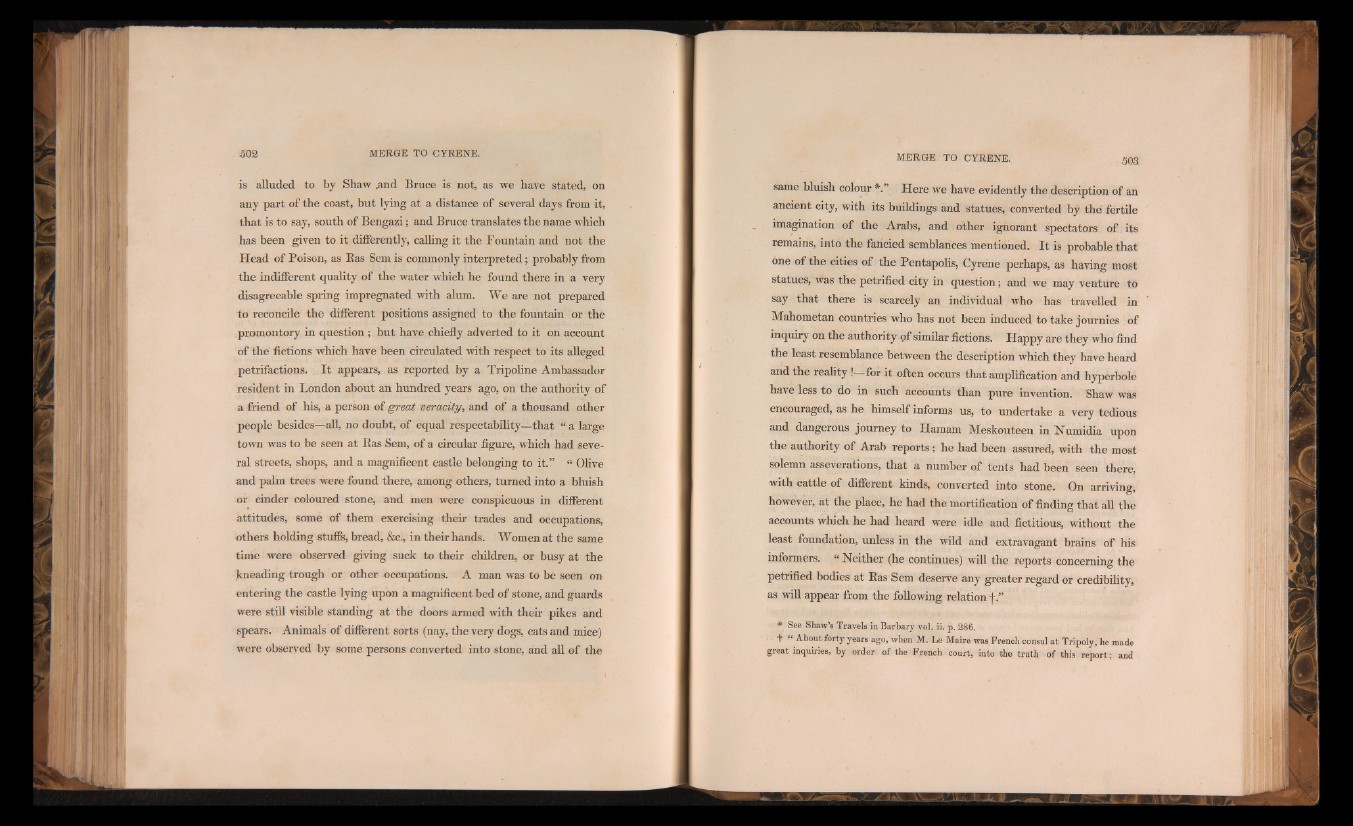
is alluded to by Shaw .and Bruce is not, as we have stated, on
any part of the coast, but lying at a distance of several days from it,
that is to say, south of Bengazi; and Bruce translates the name which
has been given to it differently, calling it the Fountain and not the
Head of Poison, as Bas Sem is commonly interpreted; probably from
the indifferent quality of the water which he found there in a very
disagreeable spring impregnated with alum. We are not prepared
to reconcile the different positions assigned to the fountain or the
promontory in question ; but have chiefly adverted to it on account
of the fictions which have been circulated with respect to its alleged
petrifactions. I t appears, as reported by a Tripoline Ambassador
resident in London about an hundred years ago, on the authority of
a friend of his, a person of great veracity, and of a thousand other
people besides—all, no doubt, of equal respectability—that “ a large
town was to be seen at Bas Sem, of a circular figure, which had several
streets, shops, and a magnificent castle belonging to it.” “ Olive
and palm trees were found there, among others, turned into a bluish
or cinder coloured stone, and men were conspicuous in different
attitudes, some of them exercising their trades and occupations,
others holding stuffs, bread, &c., in their hands. Women at the same
time were observed giving suck to their children, or busy at the
kneading trough or other occupations. A man was to be seen on
entering the castle lying upon a magnificent bed of stone, and guards
were still visible standing at the doors armed with their pikes and
spears. Animals of different sorts (nay, the very dogs, cats and mice)
were observed by some persons converted into stone, and all of the
same bluish colour Here we have evidently the description of an
ancient city, with its buildings and statues, converted by the fertile
imagination of the Arabs, and other ignorant spectators of its
remains, into the fancied semblances mentioned. I t is probable that
one of the cities of the Pentapolis, Cyrene perhaps, as having most
statues, was the petrified city in question; and we may venture to
say that there is scarcely an individual who has travelled in
Mahometan countries who has not been induced to take journies of
inquiry on the authority of similar fictions. Happy are they who find
the least resemblance between the description which they have heard
and the reality !—for it often occurs that amplification and hyperbole
have less to do in such accounts than pure invention. "Shaw was
encouraged, as he himself informs us, to undertake a very tedious
and dangerous journey to Hamam Meskouteen in Numidia upon
the authority of Arab reports; he had been assured, with the most
solemn asseverations, that a number of tents had been seen there,
with cattle of different kinds, converted into stone. On arriving,
however, at the place, he had the mortification of finding that all the
accounts which he had heard were idle and fictitious, without the
least foundation, unless in the wild and extravagant brains of his
informers. “ Neither (he continues) will the reports concerning the
petrified bodies at Bas Sem deserve any greater regard or credibility,
as will appear from the following relation f.”
* See Shaw’s Travels in Barbary vol. ii. p. 286.
+ “ About forty years ago, when M. Le Maire was French consul at Tripoly, he made
great inquiries, by order of the French court, into the truth of this report; and